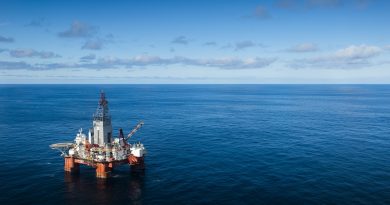Blog – Walking around Murmansk under the midnight sun
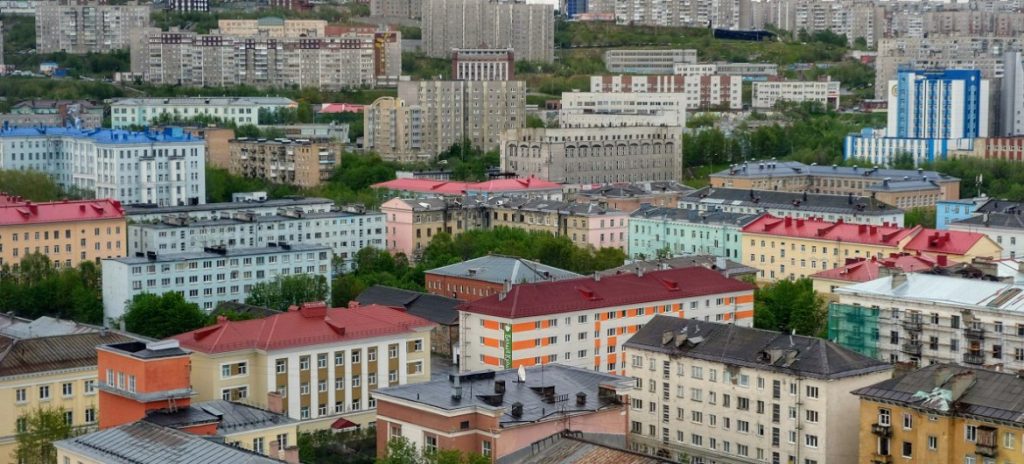
Last week, I recounted my overland journey with thirty-some colleagues from Kirkenes, Norway to Murmansk, Russia. The five-hour road trip took us past a noxious nickel smelter, military training camps, and a little roadside shack selling fish pies and beers guarded by two fluffy husky dogs.
After leaving the the mining town of Nikel, which sits close to the border with Norway, we hardly passed any other settlements as we wound our way through the tundra.
That all changed when we arrived in Murmansk around seven in the evening. Looking out across the fjord we would soon cross by bridge, boats sat in the harbor, nine-story concrete residential towers lined the horizon, and a 116-foot tall statue – the second tallest in Russia – stood in honor of the “defenders of the Soviet Arctic during the Great Patriotic War” (World War II).
Driving into the city, we passed dozens of car-repair shops lining its outskirts. A tram and a few cars rolled along wide, half-empty boulevards that were clearly built at the time when the city had a much larger population. Murmansk’s population peaked in 1989 at 468,000. Since the collapse of the Soviet Union, it has dropped 36% to just under 300,000 people.
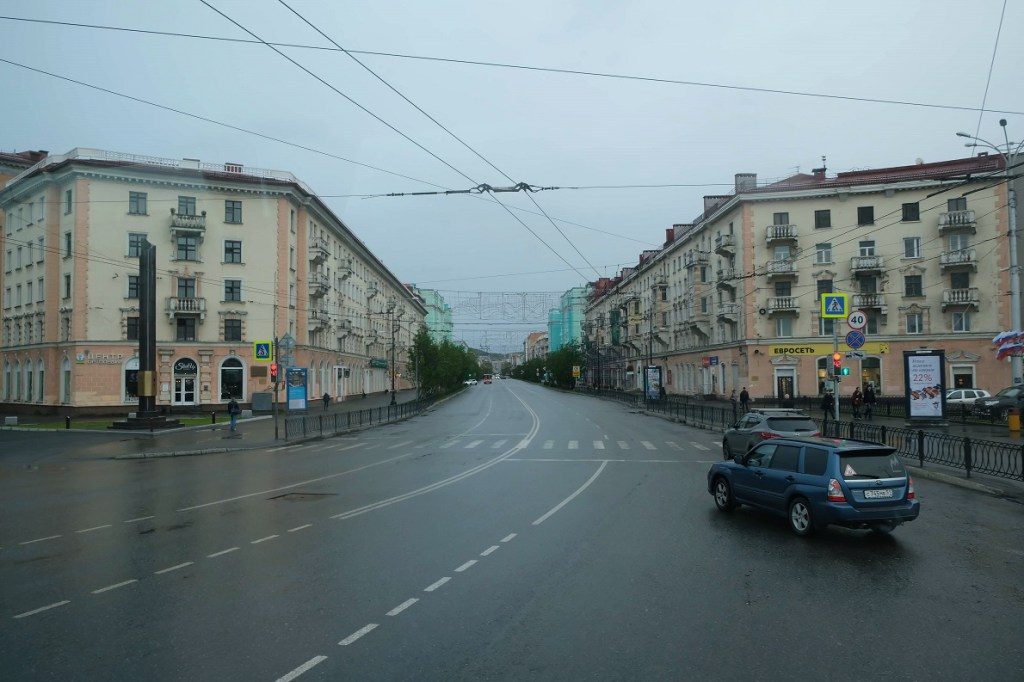
Murmansk, which was founded in 1915 as a military outpost during World War I, has remained strategically important into the 21st century. Around the Kola Peninsula, the Soviets kept their nuclear submarines (some of which are now rusting away) and dumped radioactive waste at 11 separate sites.
Today, the ice-free Port of Murmansk is a hub for Russian nuclear activity. Last month, the world’s first floating nuclear power plant, docked at the pier of Atomflot, the maritime subsidiary of the state-owned nuclear energy company Rosatom. Next summer, the plan is for the 70-megawatt vessel, named Akademik Lomonosov, to be towed along the Northern Sea Route to the Russian Far East port city of Pevek, where it will provide enough energy to replace two onshore nuclear and coal-fired power plants.
A plan to double coal exports
Murmansk may be a hub for nuclear energy, but it’s still a major gateway for coal – and lots of it. Every year, fifteen million tons of the black sooty stuff moves through the port, which sits right in the middle of town. Residents have to contend with anthracite dust blackening the air and coating their window sills and lungs.

Much of the world, including China, the largest producer and consumer of coal, is trying to shift away from burning the fossil fuel. But on Kola Bay’s western shores, construction is under way on a new coal terminal that will increase the region’s coal handling capacity by a further 18 million tons. This project is part of a $2.3 billion infrastructure development plan to transform the Murmansk region into a hub for Arctic shipping via the Northern Sea Route – or, as it is increasingly called thanks to investments from China and the passage’s increasingly eastern orientation, the Polar Silk Road.
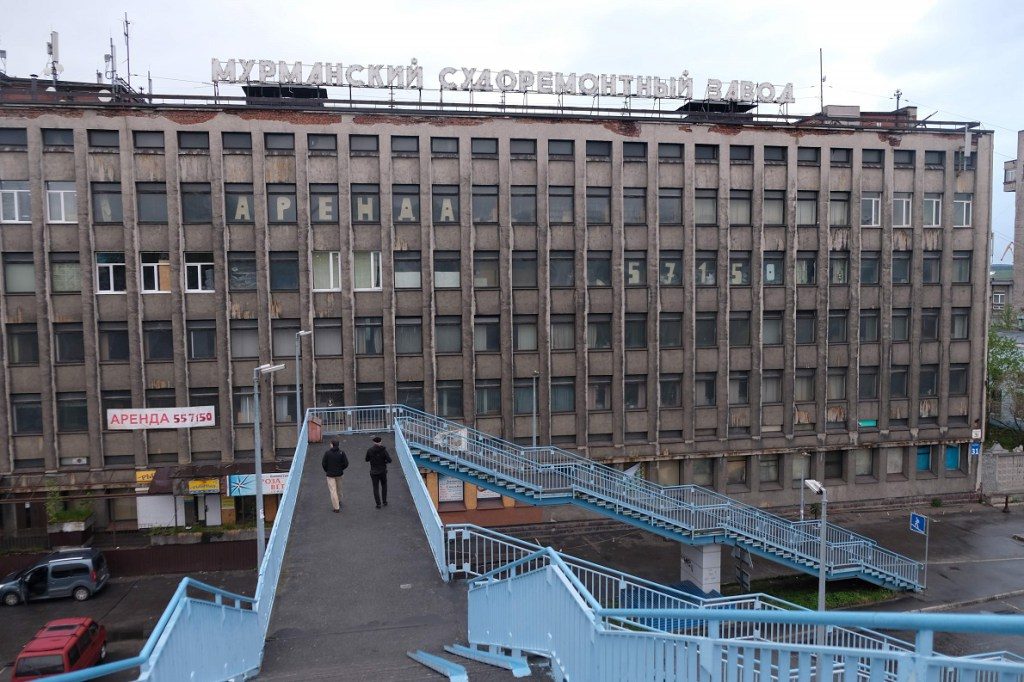
Murmansk from above and below
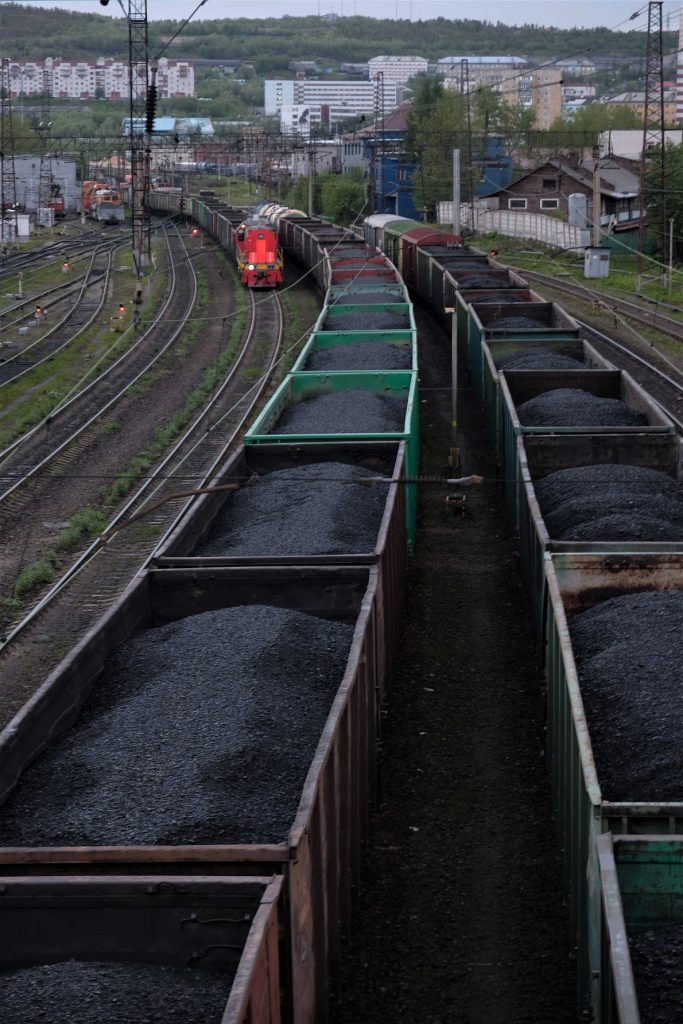
During my all-too-brief twelve hours in Murmansk, I took in the Soviet Hero City (the northernmost metropolis to be awarded such a title for heroism during the Great Patriotic War) from above and on the ground. In the restaurant at the top of the Azimut Hotel, which overlooks the city’s main square, I had a late-night dinner with some friends. Over beers and okroshka, a cold kefir soup with bits of Kamchatka crab, eggs, cucumbers, radishes, and springy sprigs of dill, we could see the city spread out below us with its elegant, pastel-colored buildings in the center and mile after mile of Soviet apartment block radiating outwards.
Views from the windows looking out to the west revealed enormous piles of coal and long, slow-moving trains rumbling along the tracks that terminate at the port of Murmansk. We could also see the world’s first nuclear icebreaker, Lenin, docked permanently in the water. Built in 1957, the hulking vessel now doubles as a museum and conference facilities.
As the bar announced last call, I looked in shock at my watch. It was approaching midnight. When the sky never dims, it’s easy to lose track of time, and especially so when an hour is lost after crossing the border from Norway to Russia. Rather than place another order, three of us made it our mission to go exploring around the Port of Murmansk under the midnight sun.

A twenty-minute walk took us down empty, tree-lined boulevards, through quiet park spaces, and past many buildings in need of a paint job. The hammering, banging, and grinding sounds of the port and rail yard grew louder as we approached. In summer, the hard work of unloading coal from the trains and putting it on ships occurs round the clock thanks to the relentless daylight.
We stood on a footbridge for a while watching the trains rumble underneath our feet. Each one in motion had light lights illuminating their red, RZD (state-owned Russian Railways)-branded locomotives, making them look a bit like Rudolph scampering around Santa’s coal stockpiles for naughty children.
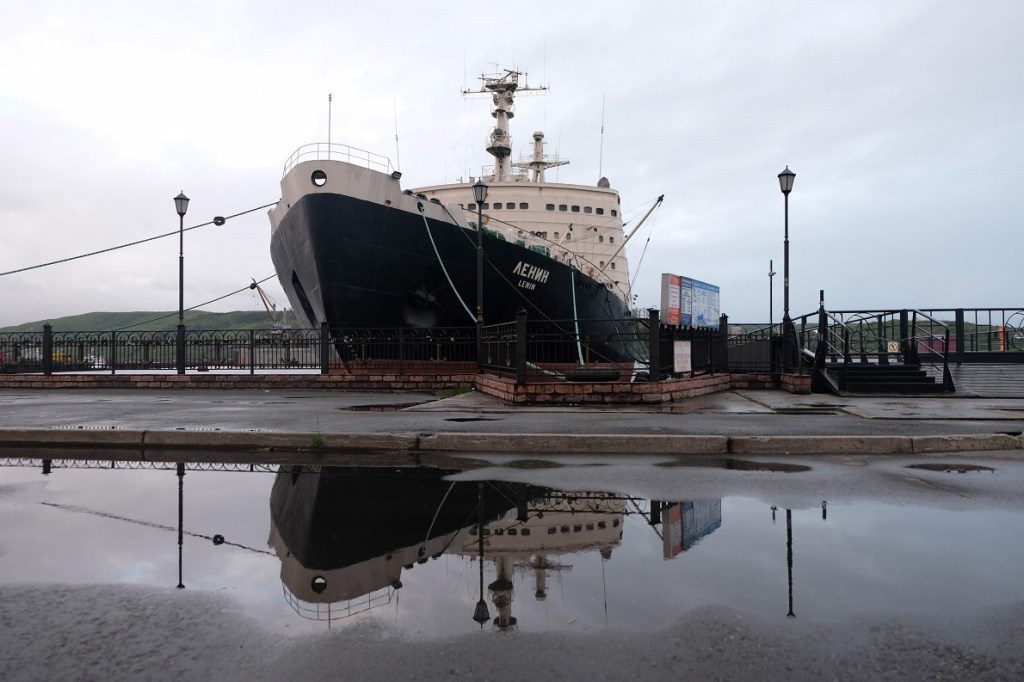
After getting enough of the trains, we walked down the steps to the port’s waterfront where we could appreciate up close the matte-black stern of Lenin, reflected in puddles from a recent downpour. The ship was decommissioned in 1989 after ice had worn down its hull over thirty years of service. Two serious nuclear accidents occurred during the icebreaker’s lifetime, exposing sailors to significant amounts of radiation. According to Norwegian environmental watchdog Bellona, however, the onboard museum scarcely mentions them (unfortunately, I didn’t have time to tour the exhibit myself).
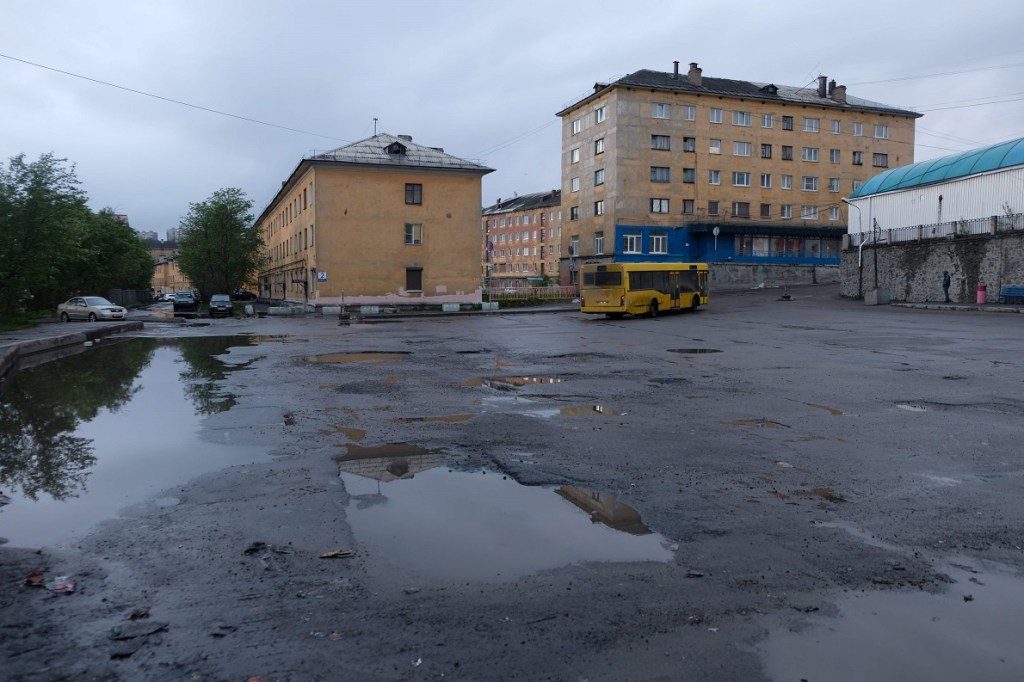
Heading back from the port, we had no problem finding our hotel thanks to the light skies. I returned around 1:30 am and slept for about five hours before getting up early in the morning to have enough time before our scheduled departure to jog up to the giant monument to Soviet soldiers who fought on the Arctic front, nicknamed Alyosha. During my short four-kilometer run there, I passed a few dog walkers out and about in the morning drizzle. Like any good vantage point in Murmansk, the monument offered yet more views of concrete and coal.

As I headed back to the hotel in the center of town, rush hour was starting. This was the first time since arriving the evening before that I’d seen more than just a handful of cars and pedestrians on Murmansk’s main streets. A brief detour on the way back took me past the central stadium, where a sculpted pair of polar bears stood frozen behind some haphazard metal fences and a sign that screamed,”Under repair – no entry!”

The polar bears’ stance – rooted in place yet looking ahead to the future – seemed to symbolize the residents of this Arctic city, or at least the two-thirds of the original population that hadn’t yet migrated to warmer climes. The region is not quite the “barren wasteland of plastic bags blowing in the wind across the frozen ground,” as Der Spiegel called it, but it clearly faces difficulties in transcending its radioactive, carbon-intensive legacy – or some might say, path-dependency.
This post first appeared on Cryopolitics, an Arctic News and Analysis blog.
Related stories from around the North:
Canada: Canada ill-prepared for Arctic shipping boom, G7 sustainability summit hears, Eye on the Arctic
China: Qingdao plays pivotal role in China’s Arctic strategy, Cryopolitics Blog
Finland: Dumped bombs pose toxic threat to Gulf of Finland, YLE News
Russia: Population dropping in Northwestern Russia, The Independent Barents Observer
Sweden: Sweden reluctantly greenlights construction of Nord Stream 2 gas pipeline, Radio Sweden
United States: Alaskan airport 5th in world for air cargo, Alaska Public Media




